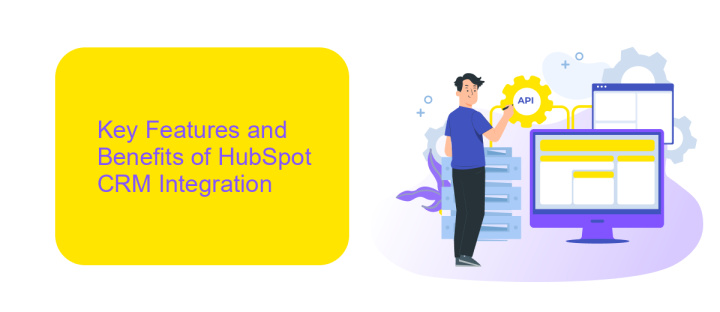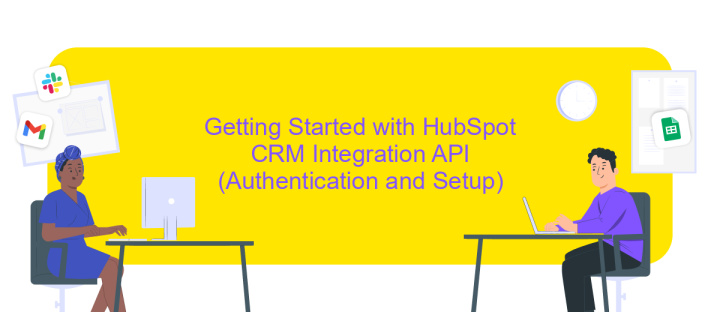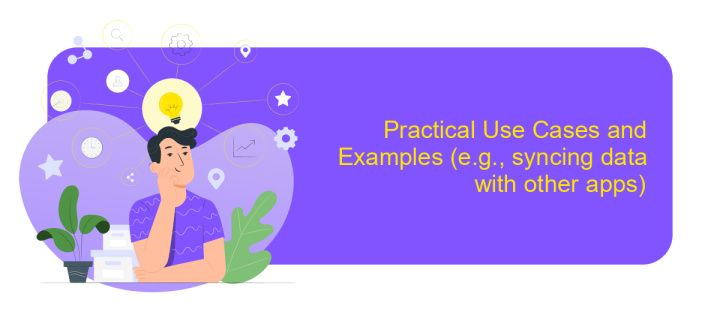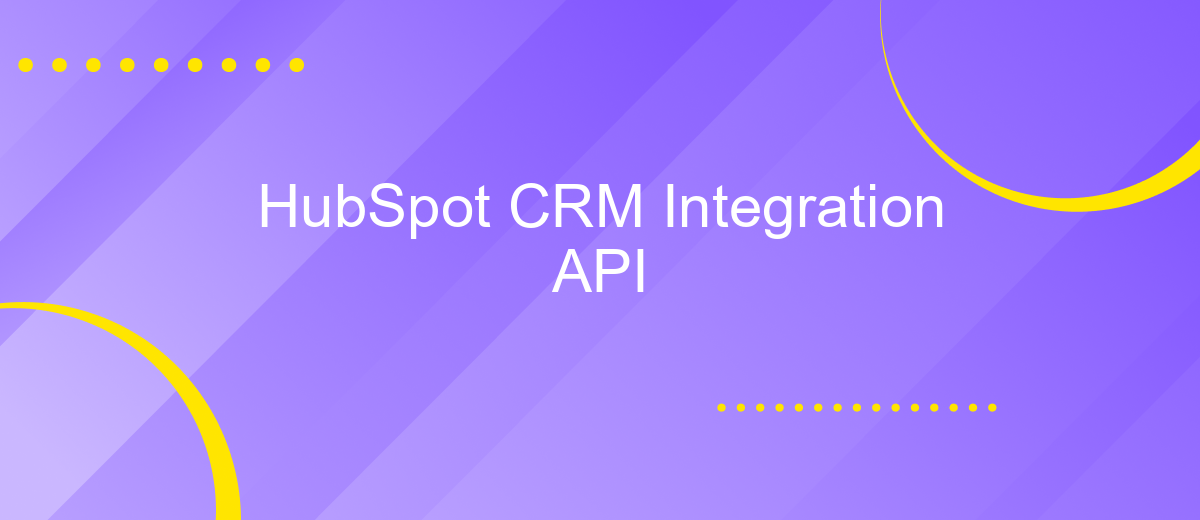HubSpot CRM Integration API
The HubSpot CRM Integration API offers businesses a seamless way to enhance their customer relationship management processes by connecting HubSpot's powerful tools with other applications. This integration allows for the automation of workflows, synchronization of customer data, and improved team collaboration. By leveraging the API, companies can tailor their CRM systems to better meet their unique needs, driving efficiency and fostering stronger customer relationships.
Introduction to HubSpot CRM Integration API
HubSpot CRM Integration API offers a comprehensive solution for businesses aiming to streamline their customer relationship management processes. By leveraging this API, companies can seamlessly connect their existing systems with HubSpot, enabling efficient data synchronization and enhanced operational workflows. This integration empowers businesses to harness the full potential of HubSpot's CRM capabilities, ensuring a unified and holistic approach to managing customer interactions.
- Automate data synchronization between disparate systems and HubSpot CRM.
- Enhance customer insights by consolidating data from multiple sources.
- Facilitate seamless communication between sales, marketing, and support teams.
- Customize integration to meet specific business needs and processes.
- Leverage HubSpot's robust analytics for improved decision-making.
Implementing the HubSpot CRM Integration API can significantly boost productivity and customer satisfaction by ensuring that all customer-related data is accurate and up-to-date. This integration not only saves time by reducing manual data entry but also provides valuable insights into customer behavior, enabling businesses to tailor their strategies for better engagement and retention. As a result, organizations can achieve a higher level of efficiency and drive growth through more informed decision-making.
Key Features and Benefits of HubSpot CRM Integration

HubSpot CRM Integration API offers a robust suite of features designed to streamline your business operations and enhance customer relationship management. One of the key features is seamless data synchronization, which ensures that your customer data is consistently updated across all platforms, reducing manual entry and minimizing errors. Additionally, the API supports advanced customization, allowing businesses to tailor their CRM experience to better suit their unique needs. This flexibility extends to third-party integrations, enabling you to connect HubSpot with various tools and services, thereby enhancing productivity and efficiency.
The benefits of using HubSpot CRM Integration API are manifold. It significantly improves team collaboration by centralizing customer information, making it easily accessible to all team members. This integration also enhances customer insights by providing a comprehensive view of customer interactions, enabling more personalized and effective communication. For businesses seeking to optimize their integration processes, services like ApiX-Drive can be invaluable. ApiX-Drive simplifies the setup and management of integrations, ensuring a smooth and efficient connection between HubSpot and other platforms, ultimately driving business growth and customer satisfaction.
Getting Started with HubSpot CRM Integration API (Authentication and Setup)

Integrating with HubSpot CRM via its API can streamline your business processes by automating data flow and improving customer management. To get started, you first need to authenticate your application with HubSpot. Authentication ensures secure data exchange and protects both your application and HubSpot's resources.
- Register your application in the HubSpot Developer portal to obtain your client ID and secret.
- Use the OAuth 2.0 protocol to request an access token. This involves redirecting users to HubSpot’s authorization page, where they can grant your app access.
- Once authorized, HubSpot will redirect users back to your specified redirect URI with an authorization code.
- Exchange this authorization code for an access token by making a POST request to HubSpot's token endpoint.
- Use the access token to authenticate your API requests to HubSpot CRM.
After successful authentication, you can start setting up your integration. This involves configuring API endpoints based on your business needs, such as syncing contact information or managing sales pipelines. By following these steps, you can effectively leverage HubSpot CRM's capabilities to enhance your business operations.
Practical Use Cases and Examples (e.g., syncing data with other apps)

HubSpot CRM Integration API offers a versatile solution for businesses looking to streamline their processes by connecting HubSpot with other applications. The integration allows for seamless data synchronization, ensuring that all systems are updated in real-time, reducing manual data entry and errors.
One practical use case is integrating HubSpot with an e-commerce platform to automate customer data management. This setup enables businesses to track customer interactions, purchase history, and preferences, providing a comprehensive view of customer behavior and enhancing personalized marketing efforts.
- Syncing contact information between HubSpot and email marketing tools to maintain up-to-date subscriber lists.
- Automating lead generation by connecting HubSpot with lead capture forms on websites or social media platforms.
- Integrating HubSpot with accounting software for automated invoicing and payment tracking.
These examples highlight the flexibility and efficiency that HubSpot CRM Integration API brings to businesses. By automating routine tasks and ensuring data consistency across platforms, companies can focus on strategic growth and customer engagement, ultimately driving better business outcomes.


Best Practices and Troubleshooting for HubSpot CRM Integration API
When integrating with the HubSpot CRM API, it's crucial to follow best practices to ensure a seamless experience. Start by thoroughly reading the API documentation to understand its capabilities and limitations. Regularly update your integration to align with HubSpot's API changes and enhancements. Use OAuth for secure authentication, and limit API calls to avoid rate limiting, ensuring efficient data handling. Implement robust error handling and logging to quickly identify and resolve issues. Testing your integration in a sandbox environment before deploying it live can prevent disruptions.
If you encounter issues, troubleshooting involves checking API response codes and logs for clues. Ensure your API keys and tokens are valid and have appropriate permissions. Consider using integration platforms like ApiX-Drive, which can simplify the setup process and provide additional tools for monitoring and managing your integrations. ApiX-Drive offers a user-friendly interface that can help automate workflows and reduce manual intervention. Keeping these practices in mind will help maintain a smooth and reliable integration with HubSpot CRM.
FAQ
What is HubSpot CRM Integration API, and how does it work?
How can I authenticate my application to use the HubSpot CRM Integration API?
Can I automate data synchronization between HubSpot CRM and other platforms?
What are the rate limits for HubSpot CRM Integration API?
How do I handle errors when using the HubSpot CRM Integration API?
Apix-Drive is a universal tool that will quickly streamline any workflow, freeing you from routine and possible financial losses. Try ApiX-Drive in action and see how useful it is for you personally. In the meantime, when you are setting up connections between systems, think about where you are investing your free time, because now you will have much more of it.

